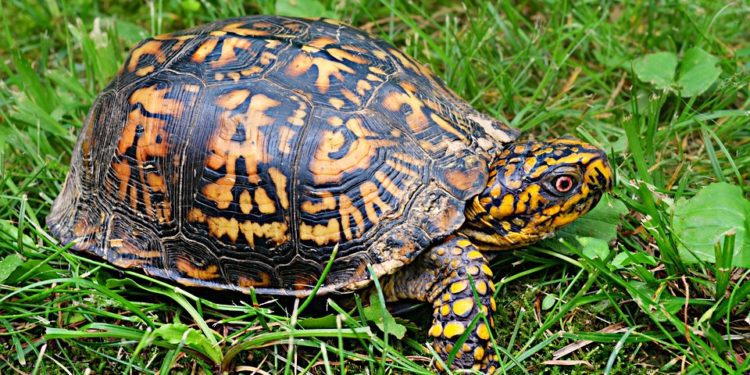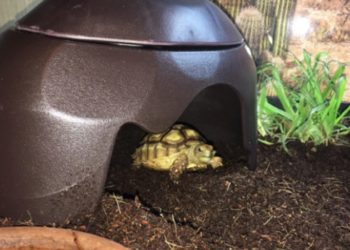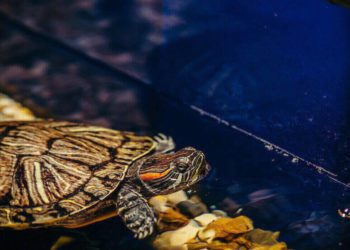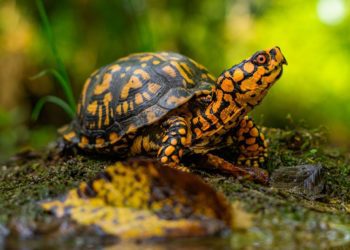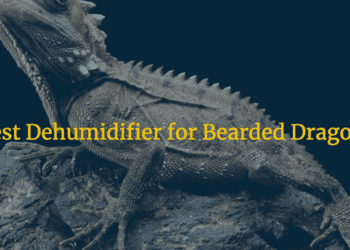Box turtles are turtles that are members of the American pond turtle family and have generally 6 species. They belong to the class of reptiles and are also considered to be kept as pets by many people.
But also they are on the verge of depletion, so they need to be conserved and that is the reason these box turtles needs to be handled with care as they can get overstressed if proper care is not taken. In this article, we will discuss the various varieties of a box turtle and will try to explain and understand them. As we should be aware of a box turtle in order to conserve them and also so that they can live a happy, safe and healthy life without any sort of environmental issues or human disturbance.
Contents
Box Turtles Varieties Explained
The box turtles various varieties are given as below:
1. Common Box turtle

The common box turtle is also known as the Eastern box turtle are one of the most common varieties of the box turtle and also this is the most preferred variety that is kept as pets by people. The common male box turtle, have colourful scales on their front legs and they are usually found in Georgia, Maine, Michigan, Illinois and Tennessee. They usually grow up to 4 to 6 inches and are dark brown in looking and have red and even orange blotches on their body that are of various sizes and shapes. Their scientific name is Terrapene Carolina and as the name suggests it is one of the common box turtle species.
2. Gulf Coast box turtle
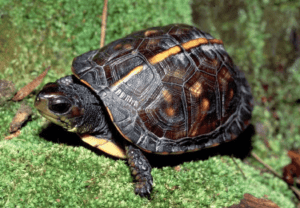
The Gulf Coast box turtle is not so commonly kept as a pet at home, so it is not a usual site where you will see them as a pet only in some rare conditions you will notice them in captivity. They are not found in many regions of North America but have a wild population where they are protected and even conserved. They usually grow up to a length of 5 to 7 inches and have a dark brown shell on their back. The Gulf Coast box turtle also has unique marginal scutes on their back that are usually flared like a ledge in the outward direction, which is believed to be used as a navigator during the humid seasons in their surrounding environment. The regions where they are usually seen are the areas of Alabama, Texas, Louisiana, Texas and even Western Florida. They are not as common as the Common Box turtle but still have their presence in these regions of North America. The scientific name for the Gulf Coast box turtle is Terrapene Carolina Major and they need higher levels of humidity in their captivity.
3. Mexican Box Turtle

The Mexican Box Turtle is also not seen commonly in captivity and that means they are not kept as pets and also there are not many scientific studies on their natural habitat. The Mexican Box Turtle are highly endemic to Mexico as the name suggests and basically in the North-Eastern Mexico part and specifically in San Luis Potosi. The scientific classification of the Mexico box turtle is not clear and is a debatable topic in itself. Therefore they are not a rare variety as they are not commonly found.
4. Western Box turtle
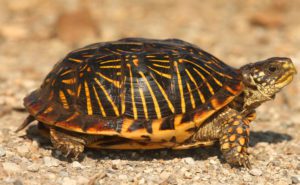
The Western Box turtles are also known as the Ornate turtles and are the subspecies of the Eastern varieties i.e. Terrapene Ornata. But like the Common box turtle, they are also seen commonly in captivity as they are kept pets over there. They are found in open grasslands and even in agricultural lands in their natural habitat. You can also see them residing along the side of the groups or the herds of the large animals that are found in the grasslands or in the agricultural lands. The reason that they are found near the herds of the large animals is that they are capable of taking out or finding the insects and grubs for the eating purpose from the huge piles of manure done by these large animals. They are usually found in the Western part of North America.
5. Florida Box Turtle

The Florida box turtle is not common box pets like the other varieties of box turtles. The Florida box turtle also needs higher levels of humidity in their captivity like the Gulf Coast box turtle and that is around 80 to 90% which is very high. You can identify the Florida box turtle from their domed shells that have various patterns of starbursts in yellow colour. As the name suggests they are indigenous to Florida and that is why they are called Florida box turtle. The scientific name of the Florida Box Turtle is Terrapene Carolina Bauri.
6. Three-Toed box turtle

The three-toed box turtle is also commonly kept as pets but as the name sounds that does not mean that they will always have 3 toes. They grow up to a length of 3.5 to 5 inches. Their carapace is keeled and is yellowish-brown or olive-brown with yellow coloured markings on it. The male three-toed can be found with red colour or brown coloured heads. The Three-toed box turtle is usually found in the regions of Missouri and they are also found in Texas and Alabama. The scientific name of the three-toed box turtle is Terrapene Carolina Triunguis.
7. Yucatan Box Turtle
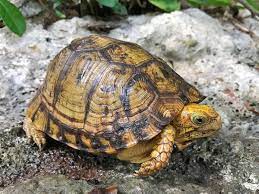
The Yucatan Box turtle is also not much common in captivity as they are not kept as pets by the people and if they are that is too rare. The shells of the Yucatan box turtle are light coloured that sometimes also have black dots and also have a yellowish coloured head. Their scientific classification is not so clear and they are usually found in Yucatan Peninsula and are endemic to this region.
8. Ornate Box turtle

The Ornate box turtle grows up to a length of 4 to 5 inches and their shells are flattened and it is dark brown in colour with yellow lines that forms a starburst pattern on top. The skin of the ornate box turtle is dark grey in colour or in some cases it is even white. In the wild, they are found in the grasslands of South Dakota, Illinois, Texas and Arizona. The scientific name of the ornate box turtle is Terrapene Ornata.
These are some of the known varieties of the box turtles and they are all unique from each other and have their own specialities and are also amazing creatures that need to be conserved by humans.
Conclusion:
The box turtles have various varieties and some of the varieties have been explained above with their basic description. Out of these, some are commonly found as pets and some are not found in captivity.
We know that the box turtles are endangered species so it is our duty to conserve them and create a safe environment for them, so that they can live a happy and healthy life and also so that they do not have a problem and if these situations still persist there will be a time when this turtle will get extinct.
More:
What Can Live With Green Anole?


